
科技赋能教育监测与评价:现状与前瞻
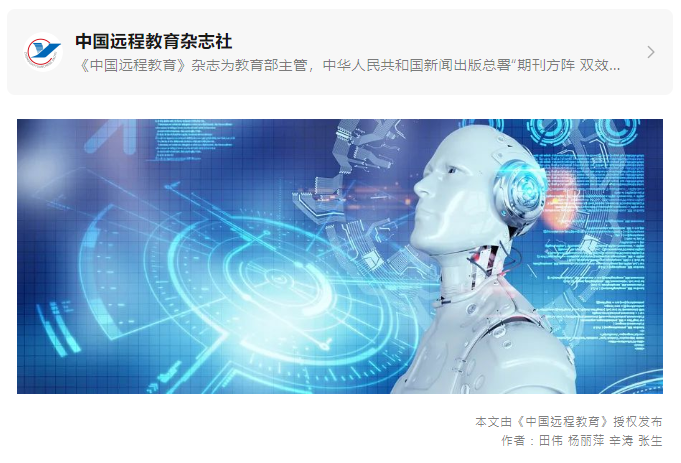
教育质量监测与评价的目的是引领教育发展。有效使用监测技术,对学习环境与学习质量的动态变化进行充分且及时的评估,不仅对于特定个体,对于国家和社会也会产生重要影响。本文分析了我国教育质量监测与评价的现状,在教育信息化建设的背景下,从教育评价云平台建设、信息化测评特色解决方案与教育监测结果可视化三方面阐述了“互联网+”国家教育质量监测已取得的各项进展,对信息技术为教育监测提供的新思路进行了系统化总结,同时揭示了我国教育质量监测在实施过程中存在的问题。为了突破监测与评价的技术瓶颈,走出监测体系建设的困境,本文提出了未来教育质量监测与先进科学技术在融合时潜在的攻关方向与必须解决的关键问题,旨在协同多方努力共同推进我国教育质量监测与评价全面和可持续发展。
关键词:教育质量监测;教育评价;基础教育;智慧监测;评价工具;未来教育;素质教育;教育信息化
1
基础教育质量监测与评价的背景
2
“互联网+”教育监测的进展
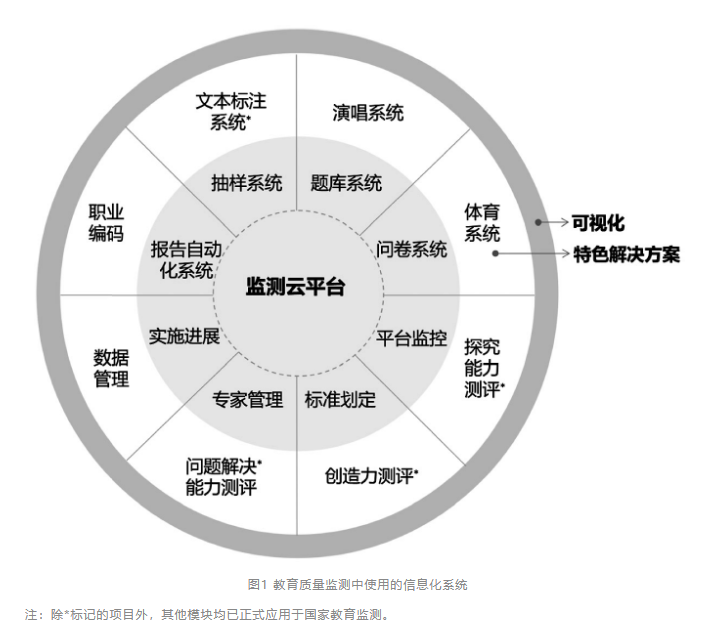
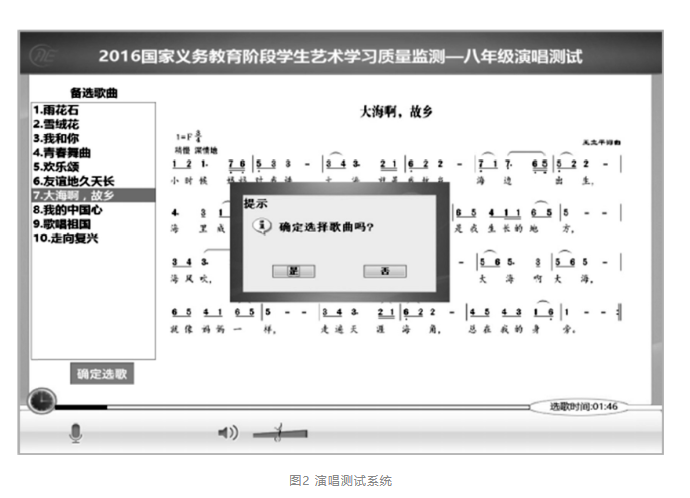
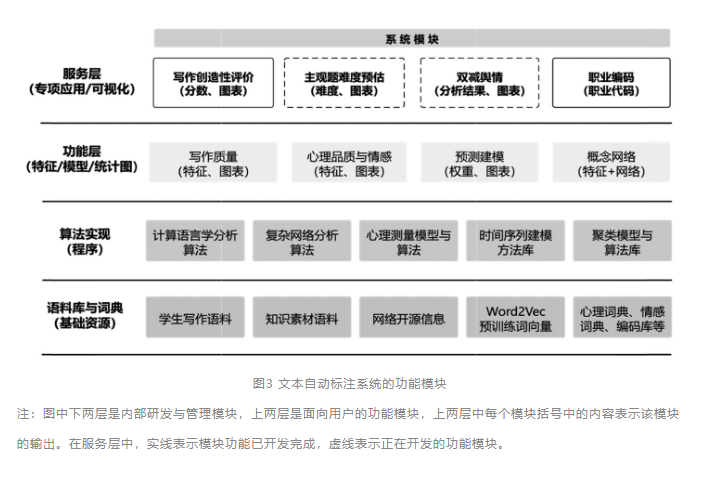
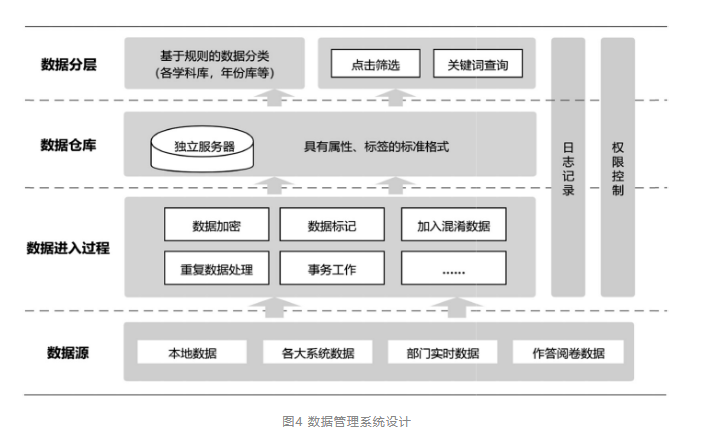
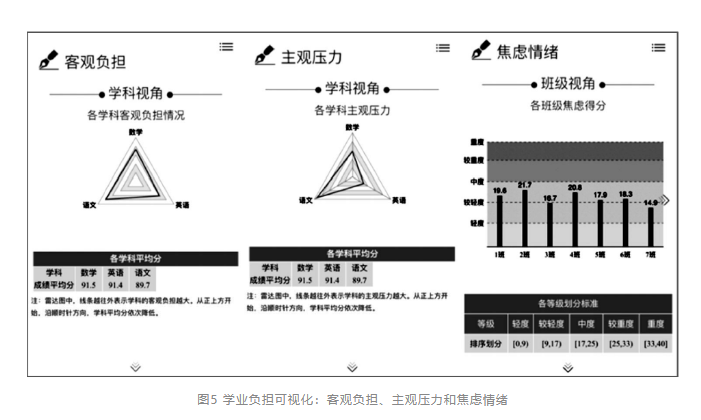
3
科技赋能教育质量监测面临的问题
4
智慧监测与评价发展前瞻
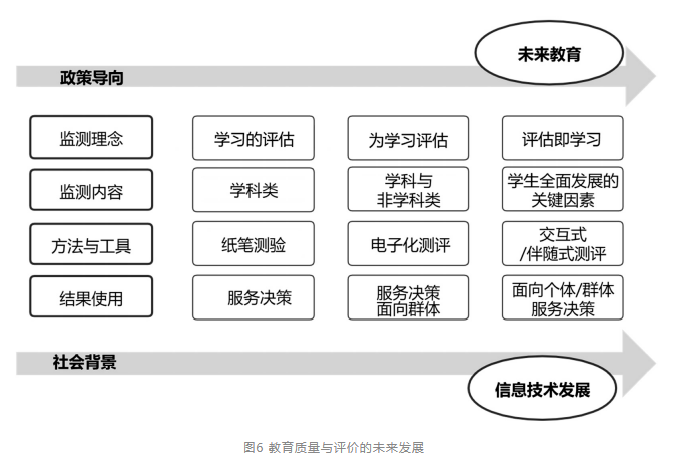
5
小结
当代教育的显著特征是教育形态与技术的不断变化。监测作为评估教育质量的工具与落实素质教育的“指挥棒”,必须对不断变化的学习与评价信息生态环境快速做出反应。大数据时代的教育信息化建设是全球共识的战略任务。虽然智慧教育可以从不同角度解读,但要实现学习的个性化,最核心的纽带是要对教育教学现场和学生学习状况进行实时评价,智慧和个性化教育才能真正发生。教育监测是一个复杂的系统,在外部和内部因素影响下,需要对教育环境或某些要素的变化进行持续观察、评估、预测和检验。随着大数据和教育质量监测与评估的融合,依托“互联网+”云平台,教育监测得以高效、有序地进行,并且为国家的宏观决策提供科学实践和理论依据。在这个过程中,监测技术及其与其他学科领域的结合对监测结果产生了直接影响,信息技术与其他先进科学为教育评估突破传统测量的瓶颈提供了科技动能。智慧教育监测与评价体系建设中面临的困境需要领域内外多方协作、共同破解,才能将教育监测理论上的可行性变为现实。
参考文献:
陈慧娟,辛涛. 2021. 我国基础教育质量监测与评价体系的演进与未来走向[J]. 华东师范大学学报:教育科学版,39(4):42-52.
董奇. 2017. 把社会主义核心价值观融入人才培养全过程[J]. 中国高等教育(1):29-30.
兰迪·班尼特. 2019. 教育测量的未来趋势[J]. 教育测量与评价(3):3-14.
国务院教育督导委员会办公室. 2014-02-18. 国务院教育督导委员会办公室印发《深化教育督导改革转变教育管理方式的意见》[EB/OL]. [2021-11-01]. http://www.moe.gov.cn/jyb_xwfb/gzdt_gzdt/s5987/201402/t20140218_163911.html
国务院教育督导委员会办公室. 2015-04-15. 国务院教育督导委员会办公室印发《国家义务教育质量监测方案》[EB/OL]. [2021-11-01]. http://www.moe.gov.cn/jyb_xwfb/xw_fbh/moe_2069/xwfbh_2015n/xw fb_150415/150415_sfcl/201504/t20150415_187151.html
国务院. 2017-01-19. 国务院印发《国家教育事业发展“十三五”规划》的通知[EB/OL]. [2021-11-02]. http://www.gov.cn/zhengce/content/2017-01/19/content_5161341.htm
李健,于泽元,谢媔媔,等. 2019. 基础教育质量监测本土化与现代化——第四届中国基础教育质量监测与评价学术年会述评[J]. 中国考试(5):73-77.
李勉. 2021. 基础教育评估监测:教育督导体系建设的新领域和新挑战[J]. 中国考试(5):48.
骆方,姜力铭,田雪涛,等. 2021. 小学生羞怯特质预测及语言风格模型构建[J]. 心理学报,53(2):155-169.
宋乃庆,贾璞. 2021. 中国基础教育发展100年:走向公平与质量的教育——以党的教育方针为逻辑主线[J]. best365英国在线体育学报:社会科学版,47(3):127-139.
檀慧玲. 2018. 新时代我国基础教育质量监测的向度转变[J]. 教育研究,39(6):98-104.
新华网. 2017-10-27. 习近平:决胜全面建成小康社会 夺取新时代中国特色社会主义伟大胜利——在中国共产党第十九次全国代表大会上的报告[EB/OL]. [2021-11-01]. http://www.xinhuanet.com//politics/19cpcnc/2017-10/27/c_1121867529.htm
辛涛,贾瑜. 2019. 国际视野与本土探索:“国际学生评估项目”的作用及启示[J]. 教育研究,40(12):9-16.
辛涛,赵茜. 2020. 基础教育质量监测评价体系的取向、结构与保障[J]. 国家教育行政学院学报(9):16-23.
张晗,贾甜远,骆方,等. 2021. 面向网络文本的BERT心理特质预测研究[J]. 计算机科学与探索,15(8):1459-1468.
张生,任岩,骆方. 2019. 学生高阶思维能力的评价:复杂问题解决的测量述评[J]. 中国特殊教育(10):90-96.
张生,王雪,齐媛. 2021. 人工智能赋能教育评价:“学评融合”新理念及核心要素[J]. 中国远程教育(2):1-8.
中共中央、国务院. 2019-02-23. 中共中央 国务院印发《中国教育现代化2035》[EB/OL]. [2021-11-01]. http://www.gov.cn/zhengce/2019- 02/23/content_5367987.htm
中共中央、国务院. 2020-10-13. 中共中央国务院印发《深化新时代教育评价改革总体方案》[EB/OL]. [2021-11-01]. http://www.moe.gov.cn/jyb_xxgk/moe_1777/moe_1778/202010/t20201013_494381.html
中华人民共和国教育部. 2021-08-27. 2020年全国教育事业发展统计公报[EB/OL]. [2021-11-01]. http://www.moe.gov.cn/jyb_sjzl/sjzl_fztjgb/202108/t20210827_555004.html
中华人民共和国教育部. 2021-07-01. 教育部等六部门关于印发《关于推进教育新型基础设施建设构建高质量教育支撑体系的指导意见》的通知[EB/OL]. [2021-11-01]. http://www.moe.gov.cn/srcsite/A16/s3342/202107/t20210720_545783.html
中华人民共和国教育部. 2021-03-04. 教育部等六部门关于印发《义务教育质量评价指南》的通知[EB/OL]. [2021-11-01]. http://www.moe.gov.cn/srcsite/A06/s3321/202103/t20210317_520238.html
中华人民共和国教育部. 2018-04-03. 教育部关于印发《教育信息化 2.0 行动计划》的通知[EB/OL]. [2021-11-02]. http://www.moe.gov.cn/srcsite/A16/s3342/201804/t20180425_334188.html
中华人民共和国教育部. 2016-06-07. 教育部关于印发《教育信息化“十三五”规划》的通知[EB/OL]. [2021-11-02]. http://www.moe.gov.cn/srcsite/A16/s3342/201606/t20160622_269367.html
中华人民共和国教育部. 2013-06-03. 教育部印发《教育部关于推进中小学教育质量综合评价改革的意见》[EB/OL]. [2021-11-01]. http://www.moe.gov.cn/srcsite/A06/s3321/201306/t20130608_15318 5.html
Angoff, W. (1996). Scales, norms, and equivalent scores. Educational Measurement: Theories and applications, 121
Ashwin, T. S., & Guddeti, R. M. R. (2020). Automatic detection of students’ affective states in classroom environment using hybrid convolutional neural networks. Education and Information Technologies, 25(2), 1387-1415.
Azucar, D., Marengo, D., & Settanni, M. (2018). Predicting the Big 5 personality traits from digital footprints on social media: A meta-analysis. Personality and Individual Differences, 124, 150-159.
Bennett, R. E. (2011). Formative assessment: A critical review. Assessment in Education: Principles, Policy & Practice, 18(1), 5-25.
Borsboom, D., Deserno, M. K., Rhemtulla, M., Epskamp, S., Fried, E. I., McNally, R. J., et al. (2021). Network analysis of multivariate data in psychological science. Nature Reviews Methods Primers, 1(1), 1-18.
Bienkowski, M., Feng, M., & Means, B. (2012). Enhancing Teaching and Learning through Educational Data Mining and Learning Analytics: An Issue Brief. Office of Educational Technology, US Department of Education. http://www.ed.gov/edblogs/technology/files/2012/03/edm- la-brief.pdf
Camara, W. (2020). Never let a crisis go to waste: Large-scale assessment and the response to COVID-19. Educational Measurement: Issues and Practice, 39(3), 10-18.
Chan, M. C. E., Ochoa, X., & Clarke, D. (2020). Multimodal learning analytics in a laboratory classroom. In Virvou M, Alepis E, Tsihrintzis G A, et al. (Ed.), Machine Learning Paradigms: Advances in Learning Analytics (pp.131-156). New York: Springer.
Cizek, G. J., & Bunch, M. B. (2007). Standard setting: A guide to establishing and evaluating performance standards on tests. Sage Publications, 47(4), 368.
Gardner, J., O’Leary, M., & Yuan, L. (2021). Artificial intelligence in educational assessment:“Breakthrough? Or buncombe and ballyhoo?”. Journal of Computer Assisted Learning, 37(5), 1207-1216.
Guba, E. G., & Lincoln, Y. S. (1989). Fourth generation evaluation. Sage.
Ibnu, S., & Marfuah, S. (2020). Students’ result of learning at chemistry department through assessment of, for, and as learning implementation. International Journal of Instruction, 13(2),165-178.
La Marca, P. M., Redfield, D., Winter, P. C., & Despriet, L. (2000). State standards and state assessment systems: A guide to alignment. Series on standards and assessments. Washington, DC: Council of Chief State School Officers.
Langenfeld, T. (2020). Internet-based proctored assessment: Security and fairness issues. Educational Measurement: Issues and Practice, 39(3), 24-27.
Li, Y., Li, P., Zhu, F., & Wang, R. (2017). Design of higher education quality monitoring and evaluation platform based on big data. Paper presented at the 2017 12th International Conference on Computer Science and Education (ICCSE).
Mislevy, R. J., Almond, R. G., & Lukas, J. F. (2003). A brief introduction to evidence-centered design. ETS Research Report Series, 2003(1), i-29.
Shermis, M. D., & Burstein, J. (Eds.). (2013). Handbook of automated essay evaluation: Current applications and new directions. NewYork: Routledge.
Sireci, S. G. (2021). NCME presidential address 2020: Valuing educational measurement. Educational Measurement: Issues and Practice, 40(1), 7-16.
European Commission. (2015). Horizon 2020 monitoring report 2014. Luxembourg: Publication Office of the EuropeanUnion.
Wang, Y., & Wang, W. (2021). Detecting pronunciation errors in spoken english tests based on multifeature fusion algorithm. Complexity, 6623885. http://doi.org/10.1155/2021/6623885.
Yan, D., Rupp, A. A., & Foltz, P. W. (2020). Handbook of automated scoring: Theory into practice. Boca Raton, FL: CRC Press.
Yang, L., Xin, T., Luo, F., Zhang, S., & Tian, X. (2021). Automated evaluation of the quality of ideas in compositions based on concept maps. Natural Language Engineering, 1-38. doi:10.1017/s13513249 21000103.
Yang, L., Xin, T., Cao, C. (2020). Predicting evaluations of essay by computational graph-based features. Frontiers in Psychology, 11, 2999.
Zhang, S., & Chang, H. (2020). A multilevel logistic hidden Markov model for learning under cognitive diagnosis. Behavior Research Methods, 52(1), 408-421.
田伟,博士,讲师,硕士生导师,本文共同第一作者;
杨丽萍,博士,博士后,本文共同第一作者。北京师范大学中国基础教育质量监测协同创新中心(100875);
辛涛,博士,教授,博士生导师,本文通讯作者,北京师范大学中国基础教育质量监测协同创新中心常务副主任(100875);
张生,博士,副教授,博士生导师,本文通讯作者,北京师范大学中国基础教育质量监测协同创新中心网络平台部主任(100875)。


